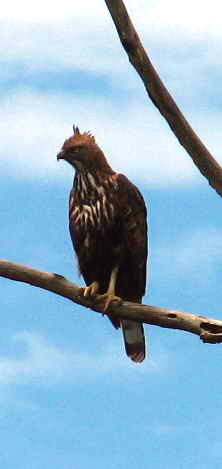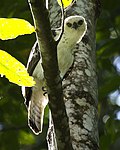| Nisaetus | |
|---|---|
 | |
| Changeable hawk-eagle Nisaetus cirrhatus | |
| Scientific classification | |
| Kingdom: | Animalia |
| Phylum: | Chordata |
| Class: | Aves |
| Order: | Accipitriformes |
| Family: | Accipitridae |
| Subfamily: | Aquilinae |
| Genus: | Nisaetus Hodgson, 1836 |
| Type species | |
| Nisaetus nipalensis Hodgson, 1836 | |
| Species | |
Nisaetus alboniger (Blyth, 1845) | |
Nisaetus, the crested hawk-eagles, is a genus of raptor in the subfamily Aquilinae, found mainly in tropical Asia. They were earlier placed within the genus Spizaetus but molecular studies show that the Old World representatives of that genus are closer to the genus Ictinaetus than to the New World Spizaetus (in the stricter sense). They are slender-bodied, medium-sized hawk-eagles with rounded wings, long feathered legs, barred wings, crests and usually adapted to forest habitats.












